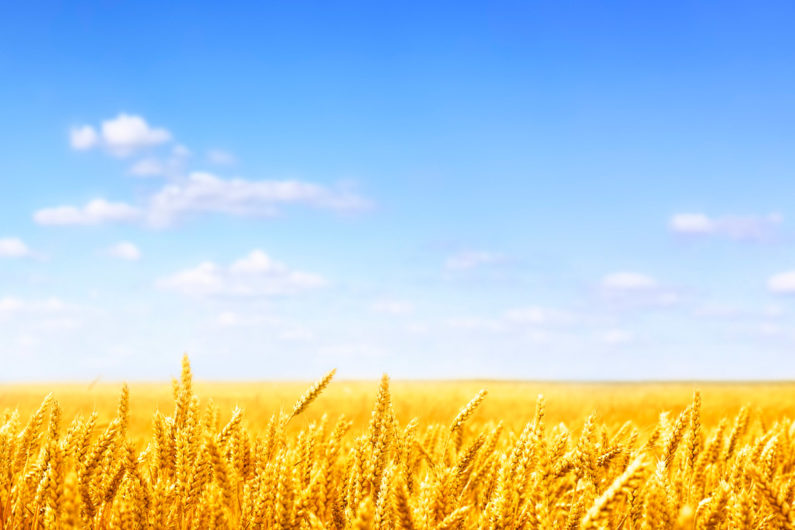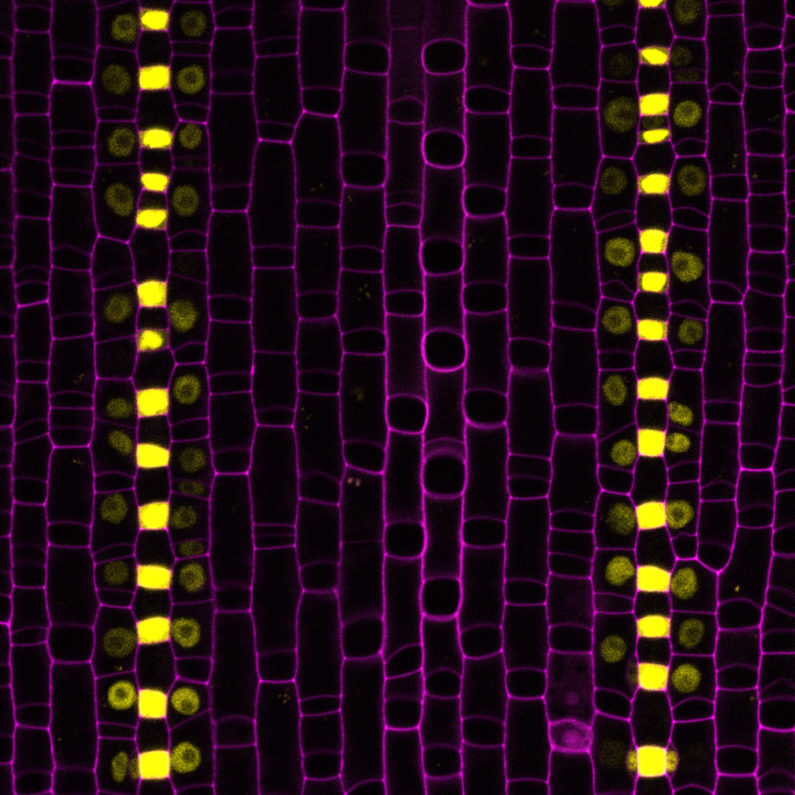Stanford scientists reveal how grass developed a better way to breathe
Grasses are better able to withstand drought or high temperatures than many other plants in large part due to changes in their pores, called stomata. Stanford scientists have discovered how grasses produce these altered pores, which could someday lead to crops that can better survive climate change.
Flash back to your first lesson in photosynthesis and you may recall stomata, the holes in the leaves of land-based plants through which they take in carbon dioxide and let out oxygen and water vapor. In the 400 million years since plants colonized the land, these holes have remained largely unchanged, save for one major exception: grasses.

Wheat and other edible grasses have developed pores that make them more drought tolerant. Stanford scientists have studied these pores with an eye toward future climate change. (Image credit: magdasmith / Getty Images)
These plants, which make up about 60 percent of the calories people consume worldwide, have a modified stoma that experts believe makes them better able to withstand drought or high temperatures. Stanford University scientists have now confirmed the increased efficiency of grass stomata and gained insight into how they develop. Their findings, reported in the March 17 issue of Science, could help us cultivate crops that can thrive in a changing climate.
“Ultimately, we have to feed people,” said Dominique Bergmann, professor of biology and senior author of the paper. “The climate is changing and, regardless of the cause, we’re still relying on plants to be able to survive whatever climate we do have.”
Adjusting an ancient system
Grasses – which include wheat, corn and rice – developed different stomata, which may have helped them spread during a prehistoric period of increased global dryness. Stomata usually have two so-called “guard cells” with a hole in the middle that opens and closes depending on how a plant needs to balance its gas exchange. If a plant needs more CO2 or wants to cool by releasing water vapor, the stomata open. If it needs to conserve water, they stay closed.

The protein in yellow moves out of the guard cells into cells on both sides. By recruiting these cells, grass stomata become better suited to hot and dry environments. (Image credit: Courtesy of Michael Raissig and Dominique Bergmann)
Grasses improved on the original structure by recruiting two extra cells on either side of the guard cells, allowing for a little extra give when the stoma opens. They also respond more rapidly and sensitively to changes in light, temperature or humidity that happen during the day. Scientists hope that by knowing more about how grass developed this system, they may be able to create or select for edible plants that can withstand dry and hot environments, which are likely to become more prevalent as our climate changes.
“We take our food and agriculture for granted. It’s not something the ‘first world’ has to deal with, but there are still large areas of the world that suffer from famine and this will increase,” said Michael Raissig, a postdoctoral researcher in the Bergmann lab and lead author of the paper. “The human population is going to explode in the next 20 to 30 years and most of that is in the developing world. That’s also where climate change will have the biggest effect.”
Growing a better mouth
Scientists have assumed grasses’ unusual stomata make these plants more efficient “breathers.” But, spurred by curiosity and a passion for developmental biology, these researchers decided to test that theory.
Thanks to a bit of luck, they found a mutant of the wheat relative Brachypodium distachyon that had two-celled stomata. Partnering with the Berry lab at the Carnegie Institution for Science, the group compared the stomata from the mutant to the normal four-celled stomata. They not only confirmed that the four-celled version opens wider and faster but also identified which gene creates the four-celled stomata – but it wasn’t a gene they expected.
“Because it was a grass-specific cell-type, we thought it would be a grass-specific factor as well,” said Raissig, “but it’s not.”
Instead of relying on a completely new mechanism, the recruitment of the extra cells seems to be controlled by a well-studied factor which is known to switch other genes on and off. In other plants, that factor is present in guard cells, where it is involved in their development. In grasses, the team found that the factor migrated out of guard cells and directly into two surrounding cells, recruiting them to form the four-celled stomata.
Feeding the world
Over evolutionary time, humans have bred and propagated plants that produce the kinds of foods we like and that can survive extreme weather.
“We’re not consciously breeding for stomata but we’re unconsciously selecting for them,” said Bergmann, who is also a Howard Hughes Medical Institute investigator. “When we want something that’s more drought resistant, or something that can work better in higher temperatures, or something that is just able to take in carbon better, often what we are actually doing is selecting for various properties of stomata.”
The adaptability and productivity of grass makes understanding this plant family critical for human survival, the scientists said. Someday, whether through genetic modification or selective breeding, scientists might be able to use these findings to produce other plants with four-celled stomata. This could also be one of many changes – to chloroplasts or enzymes, for example – that help plants photosynthesize more efficiently to feed a growing population.
Co-authors of this paper include Juliana L. Matos, Emily Abrash and Hannah R. Allison of Stanford; M. Ximena Anleu Gil and Akhila Bettadapur of Howard Hughes Medical Institute; Ari Kornfeld, Grayson Badgley and Joseph A. Berry of the Carnegie Institution for Science; and John P. Vogel of the U.S. Department of Energy. Bergmann is also a member of Stanford Bio-X and the Stanford Cancer Institute and an investigator of the Howard Hughes Medical Institute.
This research was funded by Swiss National Science Foundation, The Gordon and Betty Moore Foundation, the U.S. Department of Energy, the National Science Foundation and the Howard Hughes Medical Institute.
